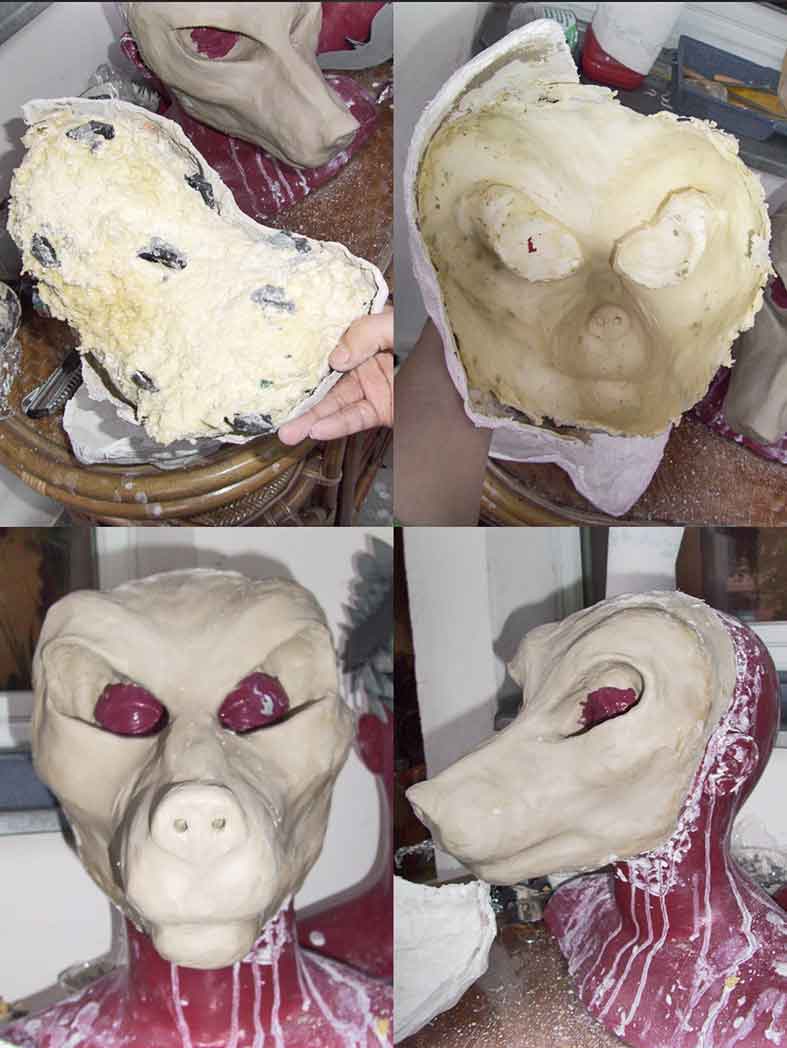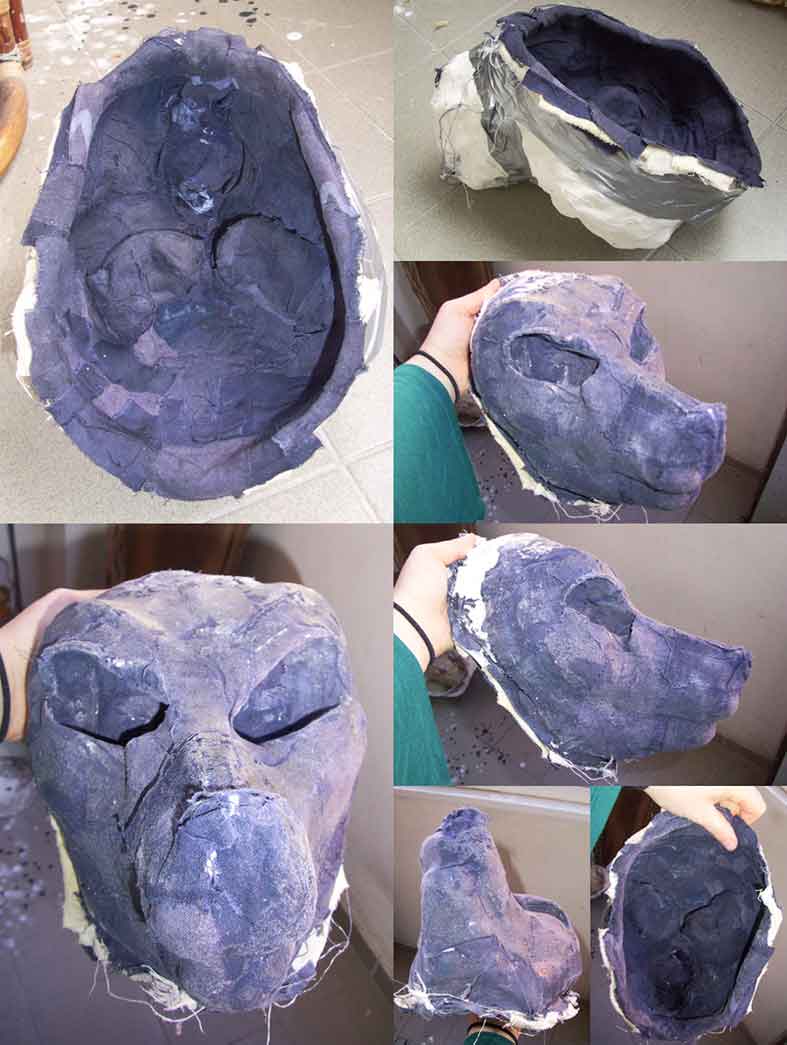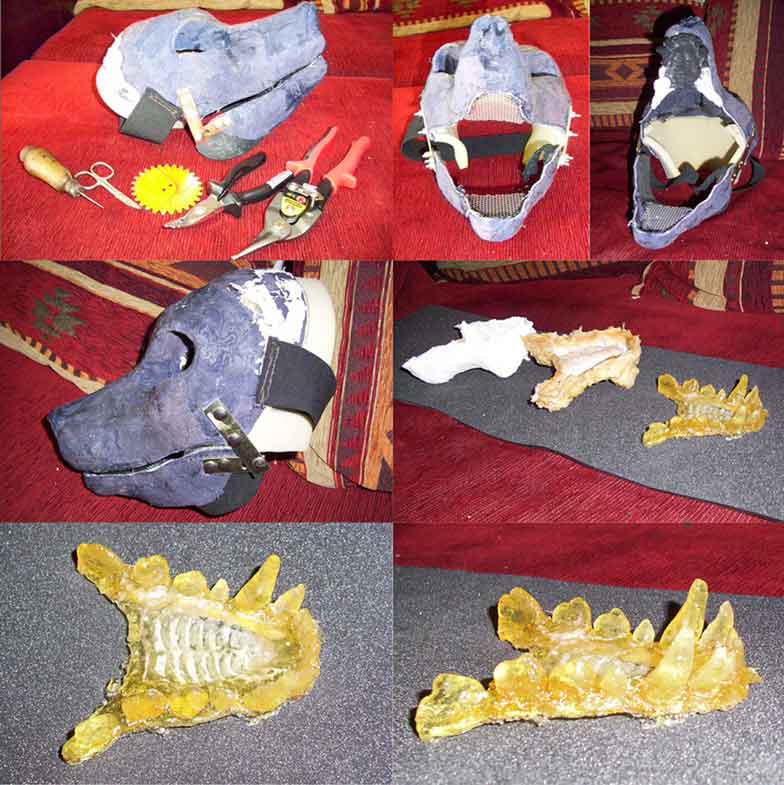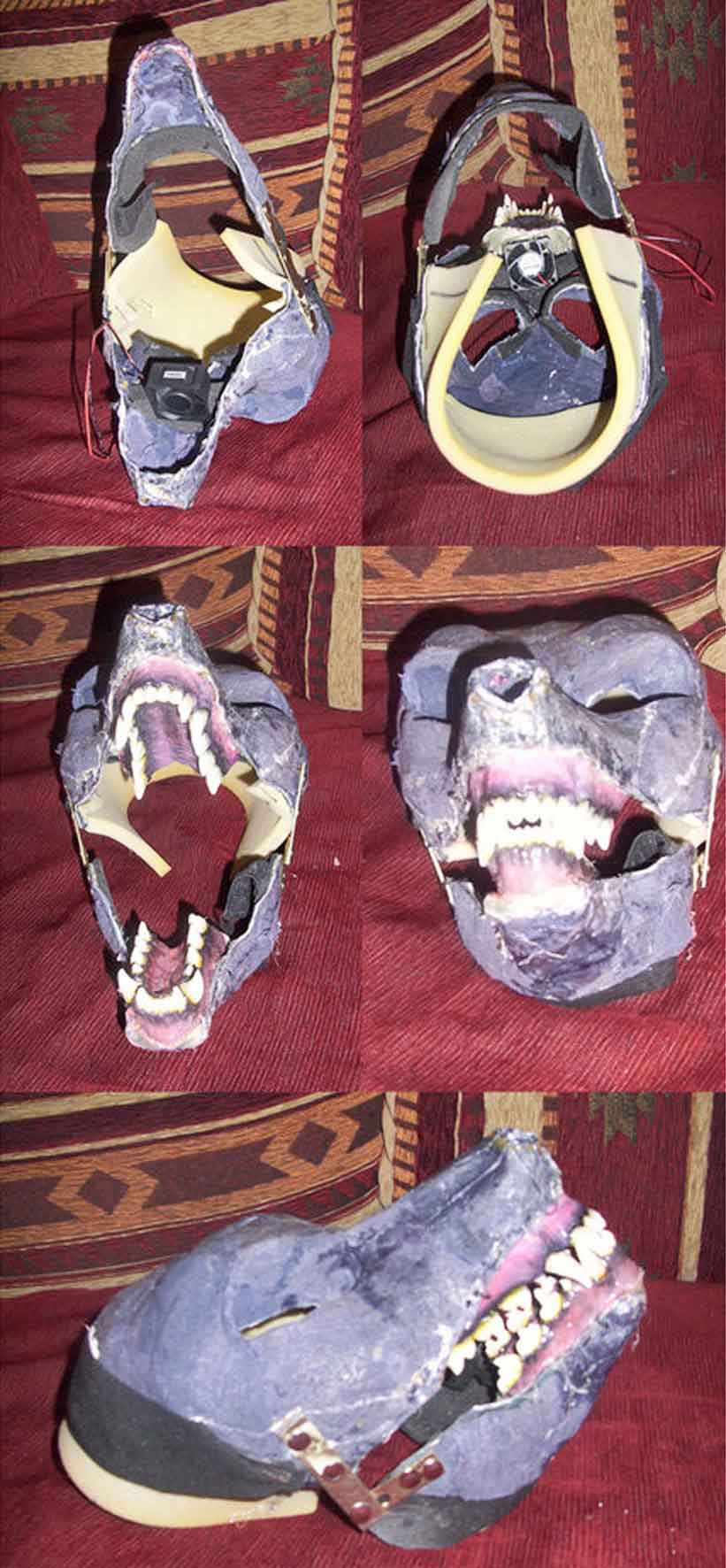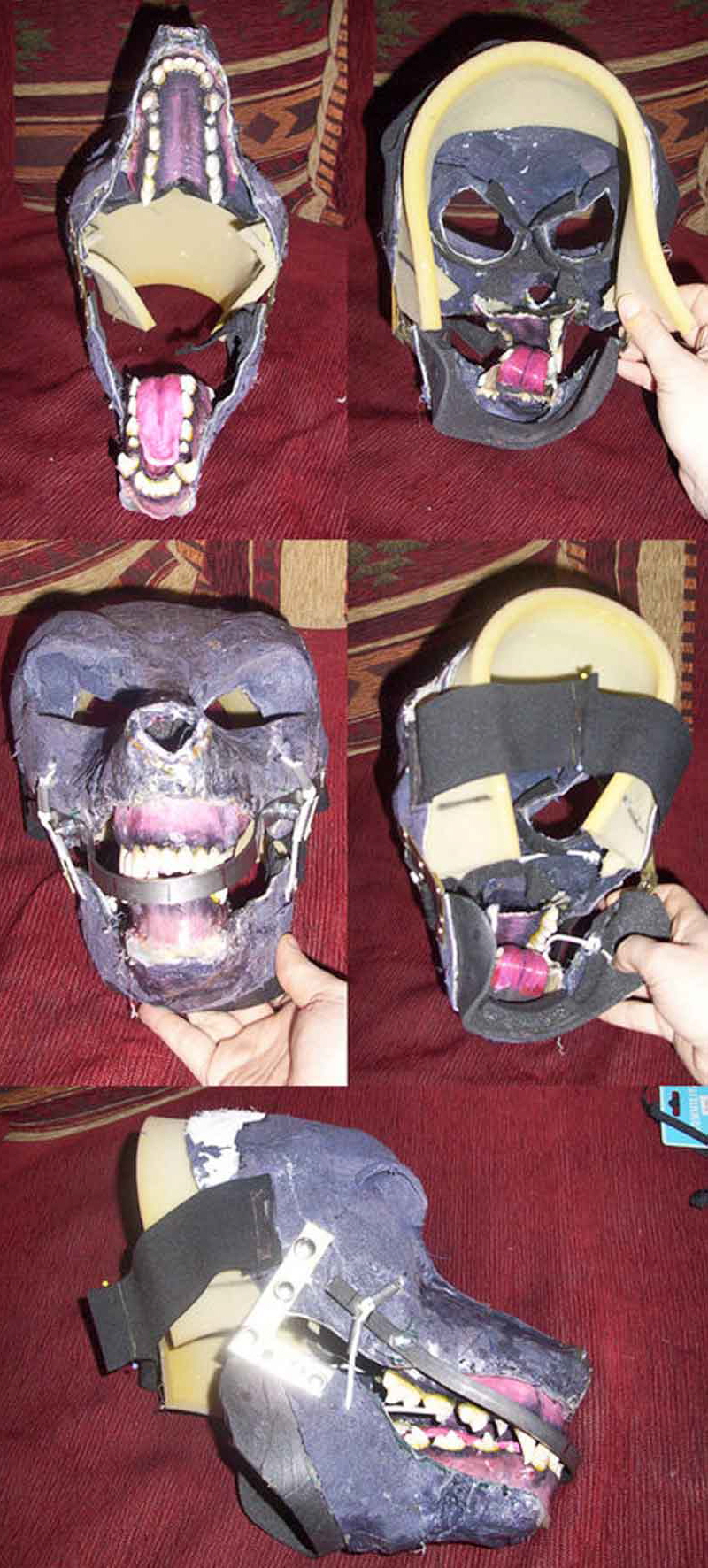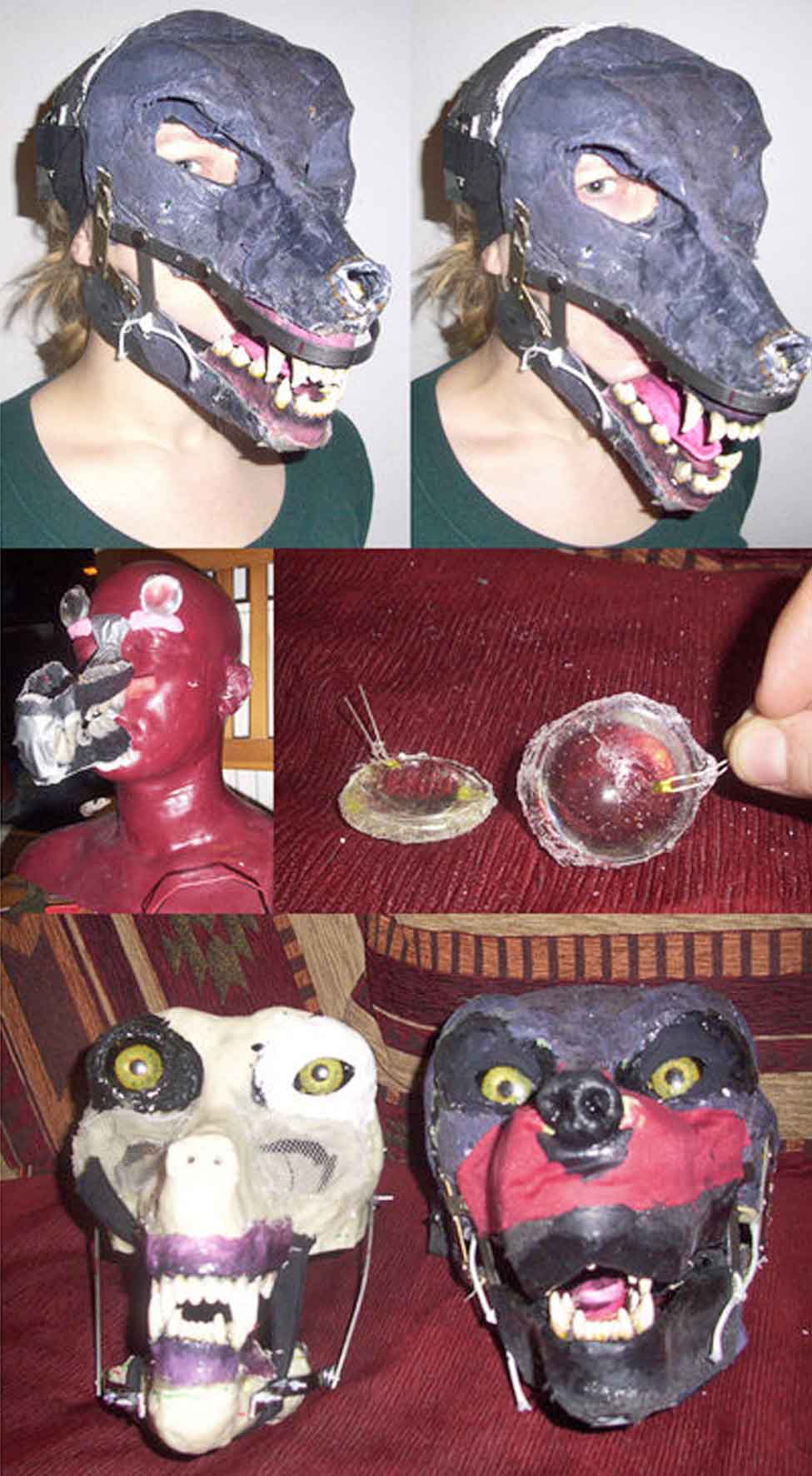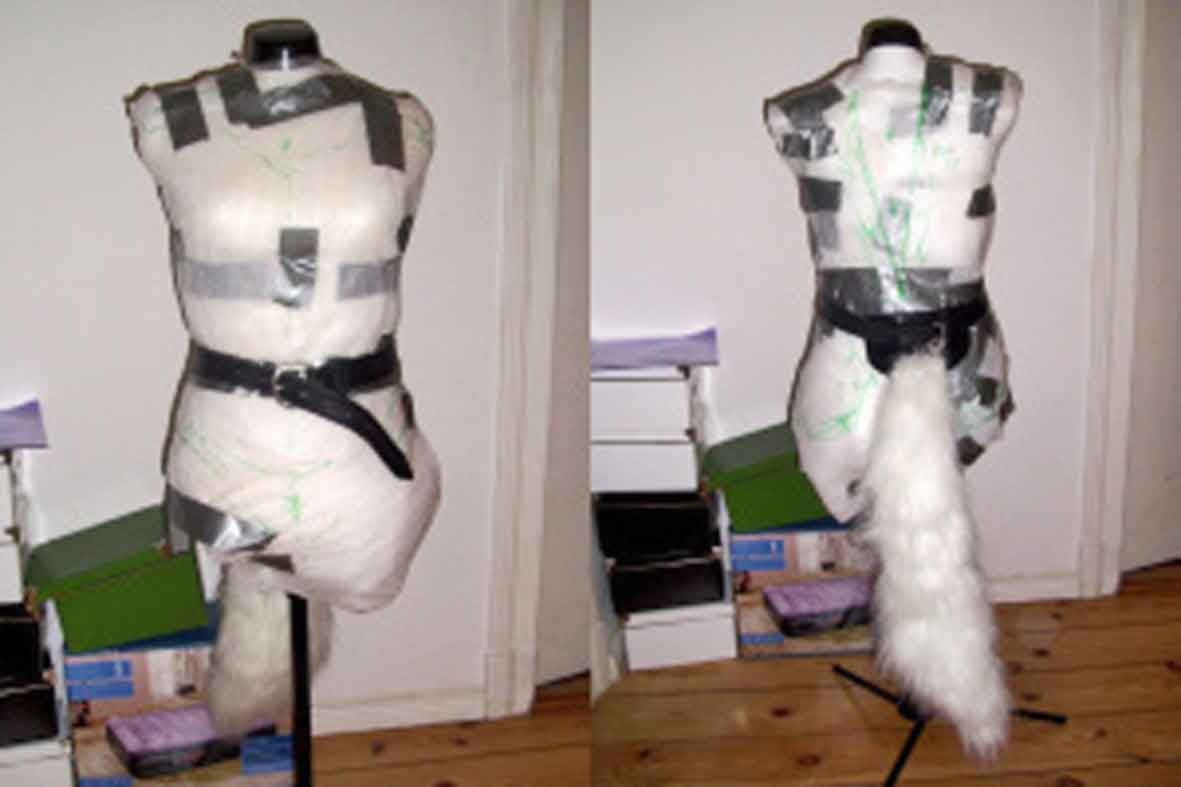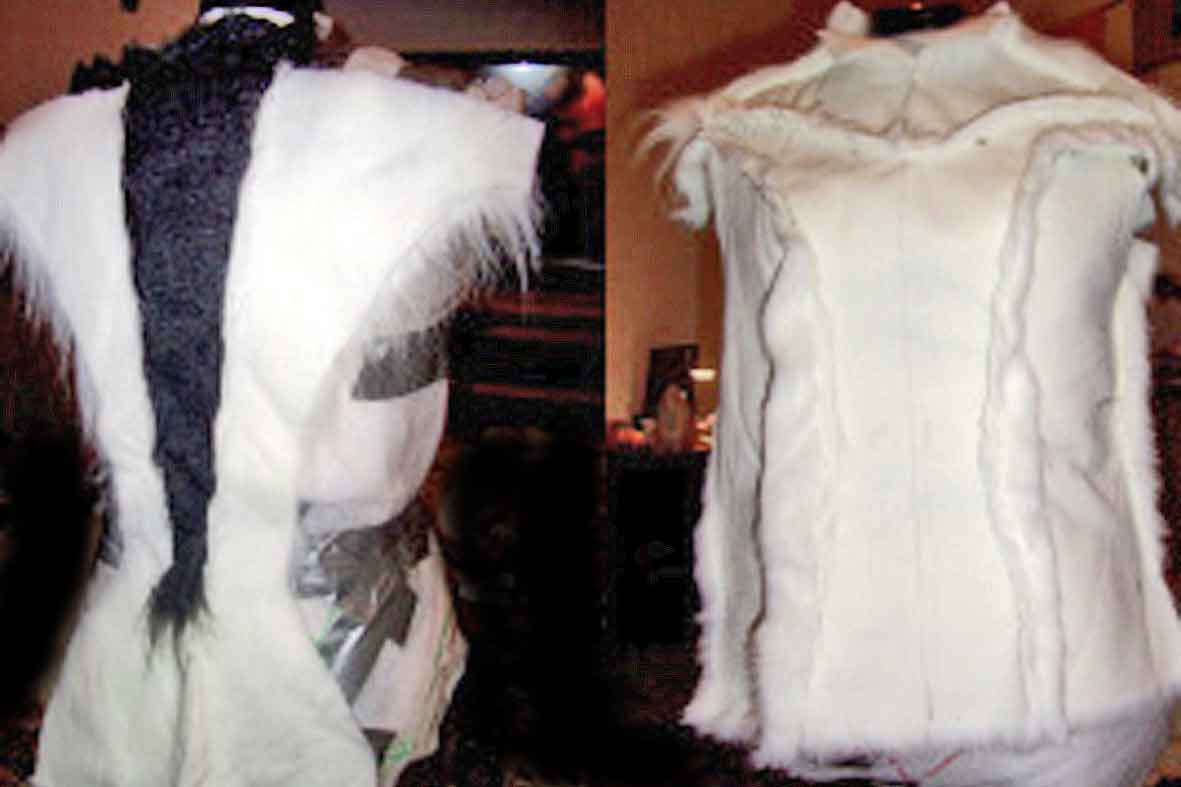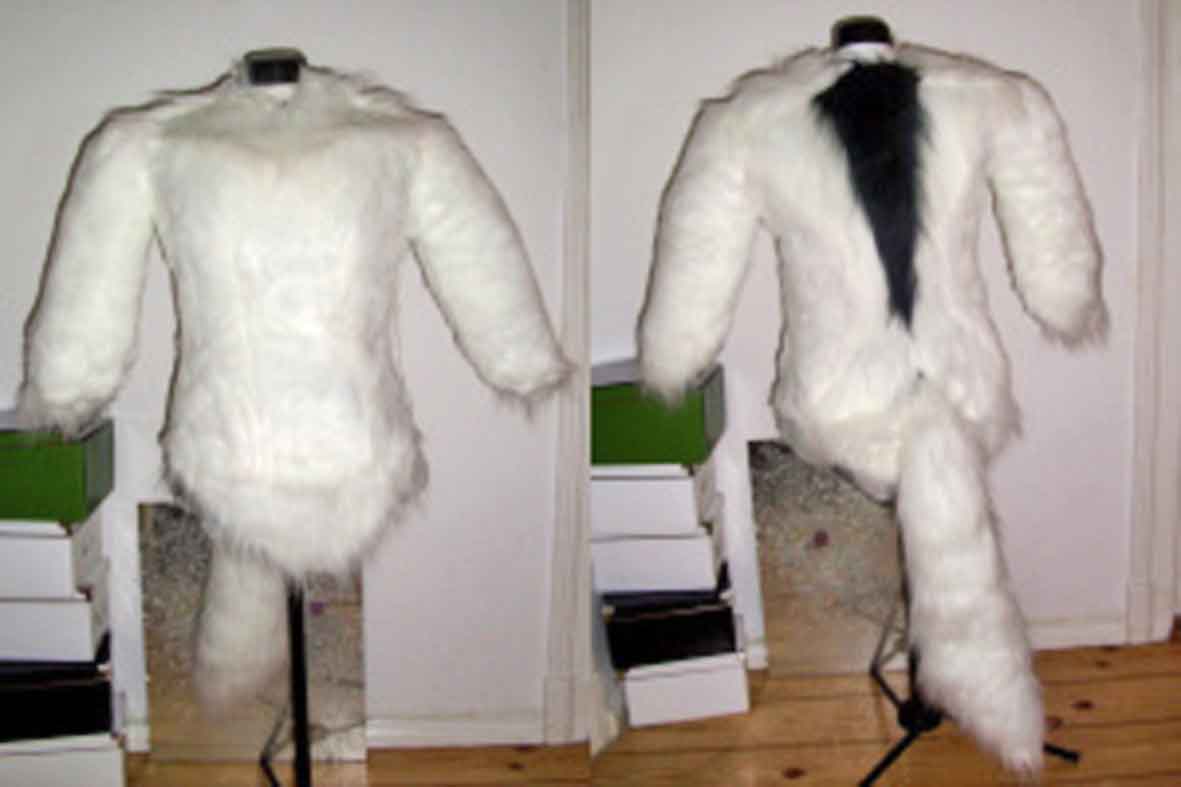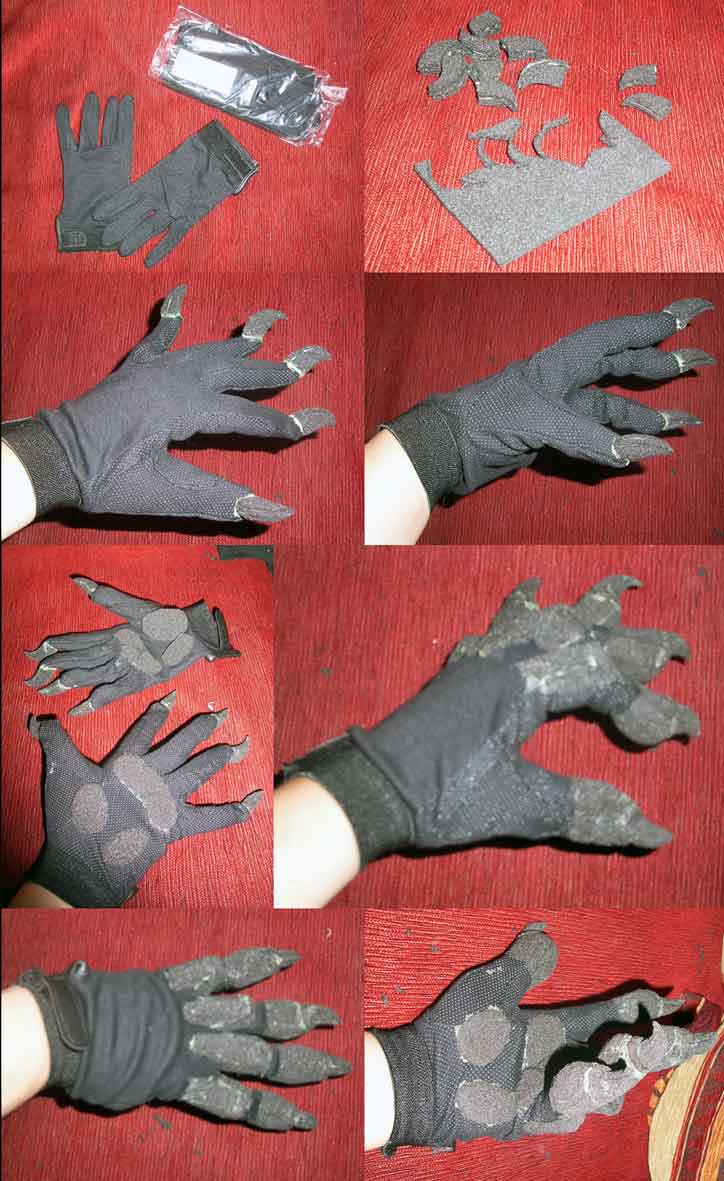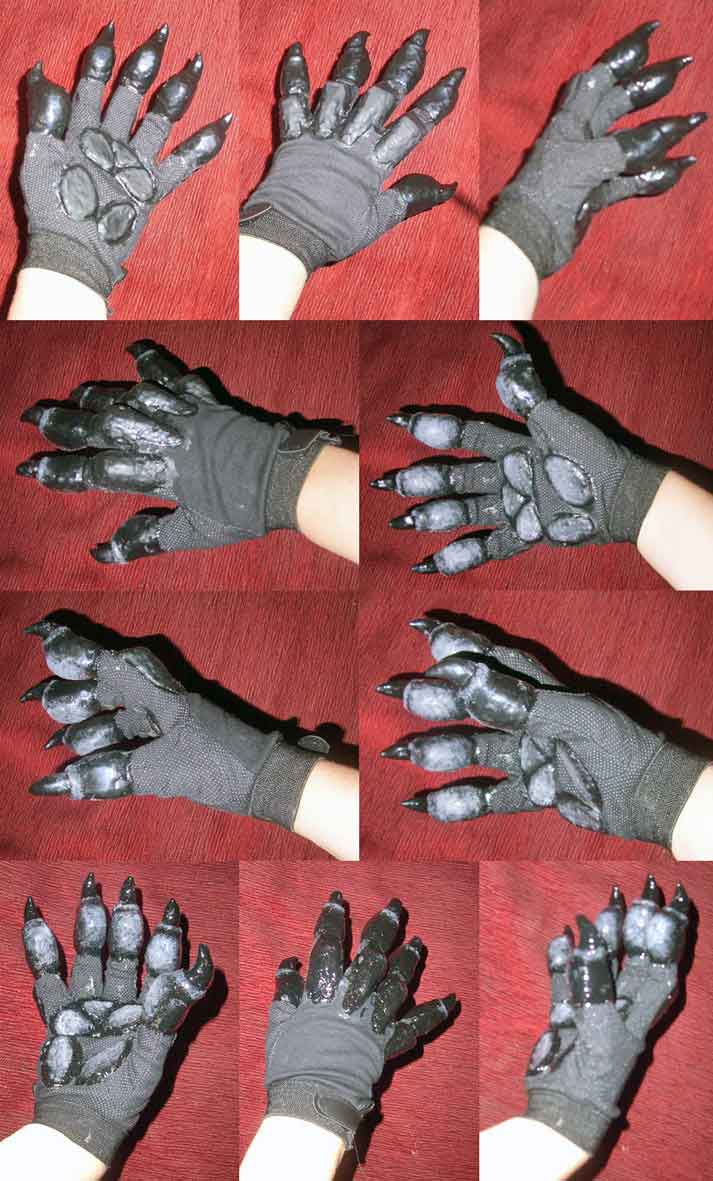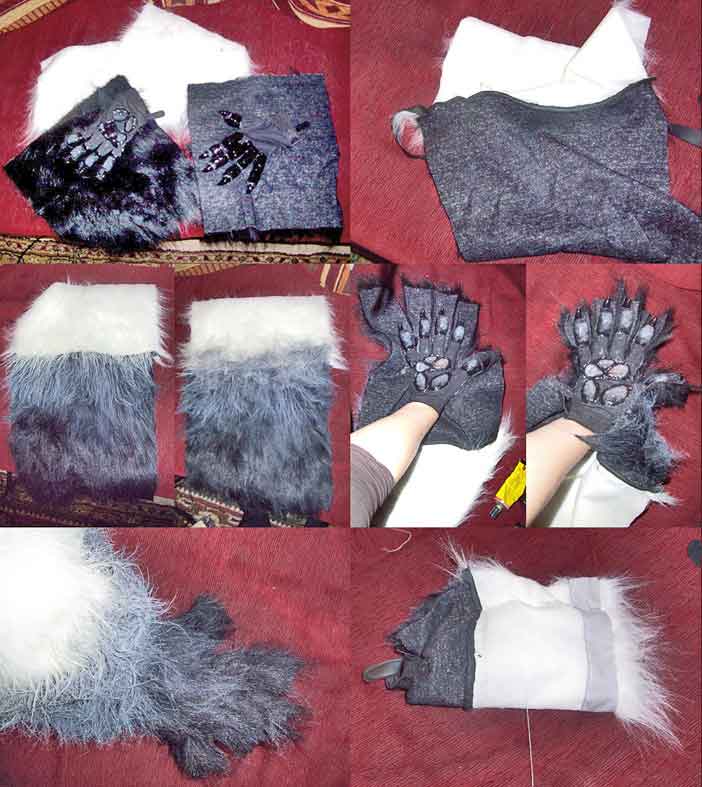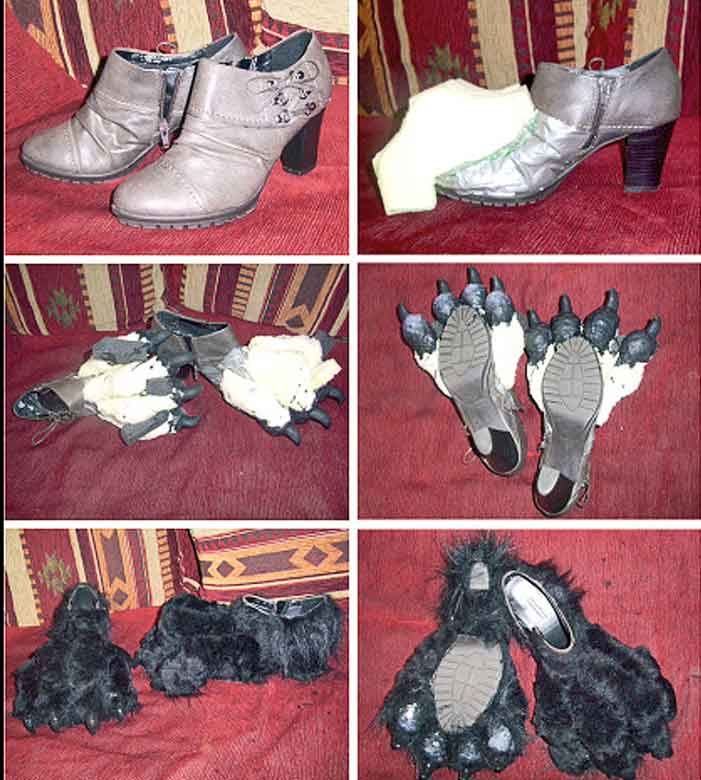|
|
|
Britta (LarpeR-Ning and DeviantArt http://poisonmilow.deviantart.com/) has carried out an ambitious large-scale project: 2 wolf-suits, a grey and a brown one. Shown here is the documentation of the evolution of the grey-white she-wolf “Youa” till july 2011: |
||||||||||||||
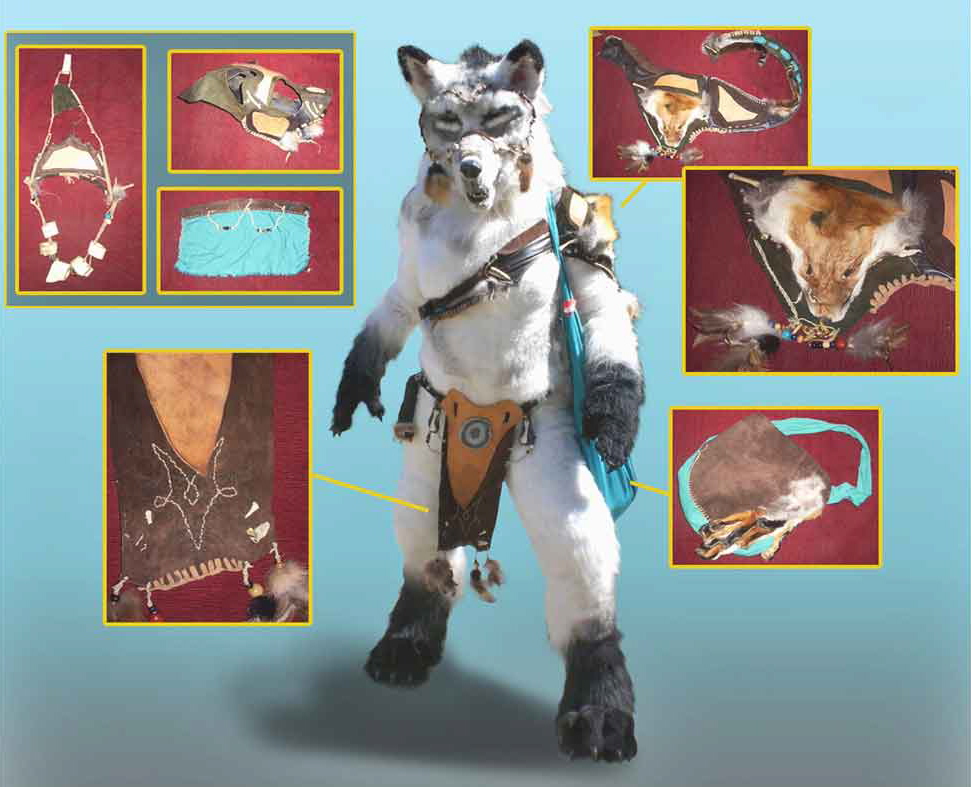 |
||||||||||||||
|
The creature is no “werewolf” but a “beastman”; a non-human species. And because it is a “player- character” (contrary to NPSc; “non-player-characters” working for the organisators of a game) Iīm using the term “finished” only in a cautious and timid way like in “fully operational”: As impressive the outfit may look at this stage- costumes like this tend to constantly evolve and are never really “finished”. The documentation is structured in the themes “mask”, “body”, “hands” and “feet”. The mask on the picture by the way is already the second one, but the building of the original wolfīs head is so interesting that it would be wrong not to show the pictures. Ok, from here on Brittaīs text (pictures can be enlarged via context-menu): |
||||||||||||||
|
The mask |
||||||||||||||
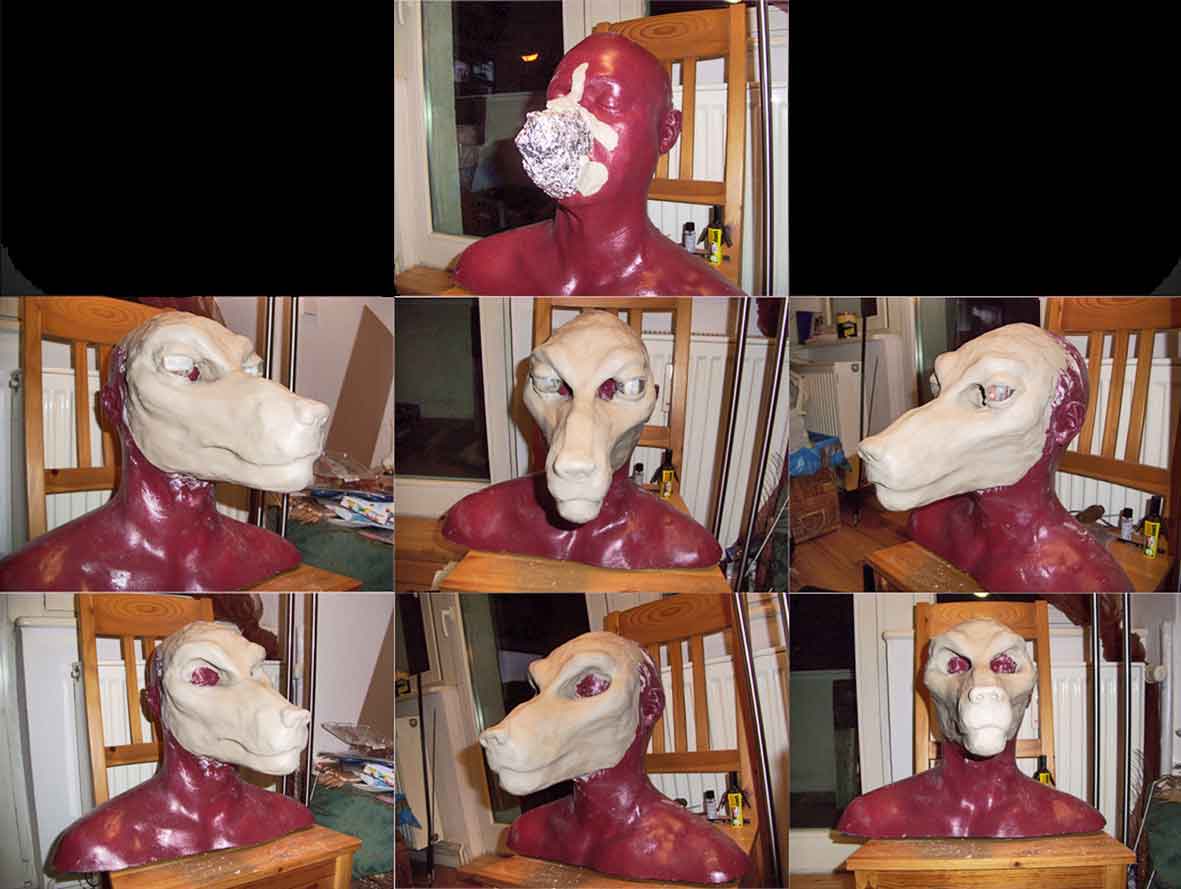 |
||||||||||||||
|
Above: Sculpted clay model of the mask. Inspired by some pictures on DeviantArt and after some talking with a friend I decided to attempt to build the mask by making a cast and using artificial resin. “Follow-me-eyes” are built in a way that the pupil is set in a recessed point of the eyeball. Done the right way this creates the disturbing effect that the eyes seem to follow an observerīs movements: the mask “lives”. |
||||||||||||||
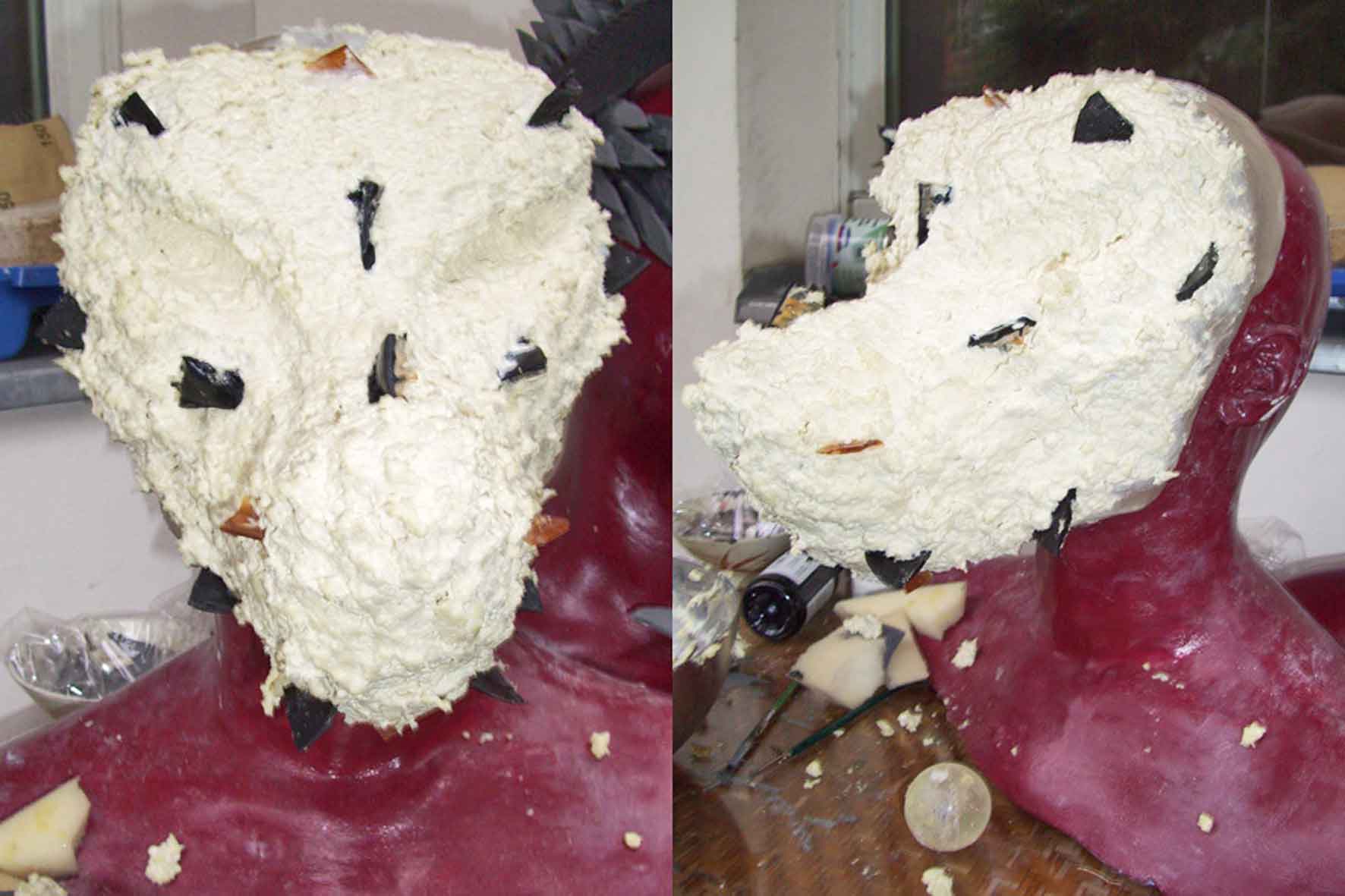 |
||||||||||||||
|
Above: Latex- cover of the clay sculpture |
||||||||||||||
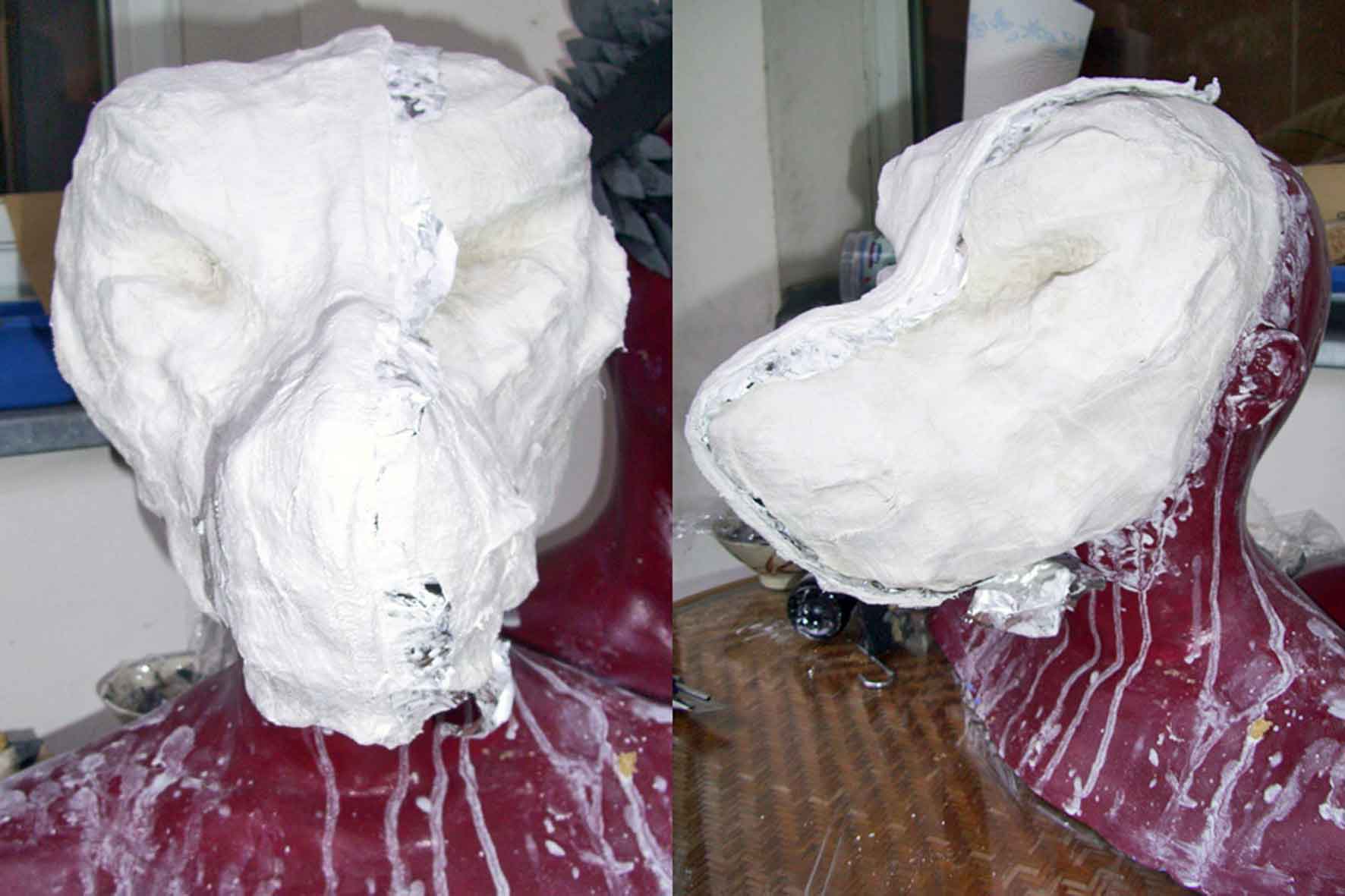 |
||||||||||||||
|
Above: Plaster cast to stabilize the soft latex- shell. |
|
|
||||||||||||||||||||||||||||
|
The term “linothorax” originally describes a pre-medieval form of upper- body-armour made of layers of linen bonded and strengthened with glue. We know this. The material is very well suited for mask- building. It is either modelled onto a positive sculpt (with the convenience that one doesnīt have to build a negative casting- mould) or - like here- worked into a negative casting shell made of a sculpt. This has the advantage that the original is replicated very precisely. The latex/ dough- shell detached very easy; only the nose got a small rip. Now to cut out and clean the mask prior to adding joints and foam. |
|
|
|
It all worked out really well. The gums are stable and look good. Now to the mistakes I made: But the technique itself works well and I look forward to using it in further projects. |
|
|
|
|
|
|
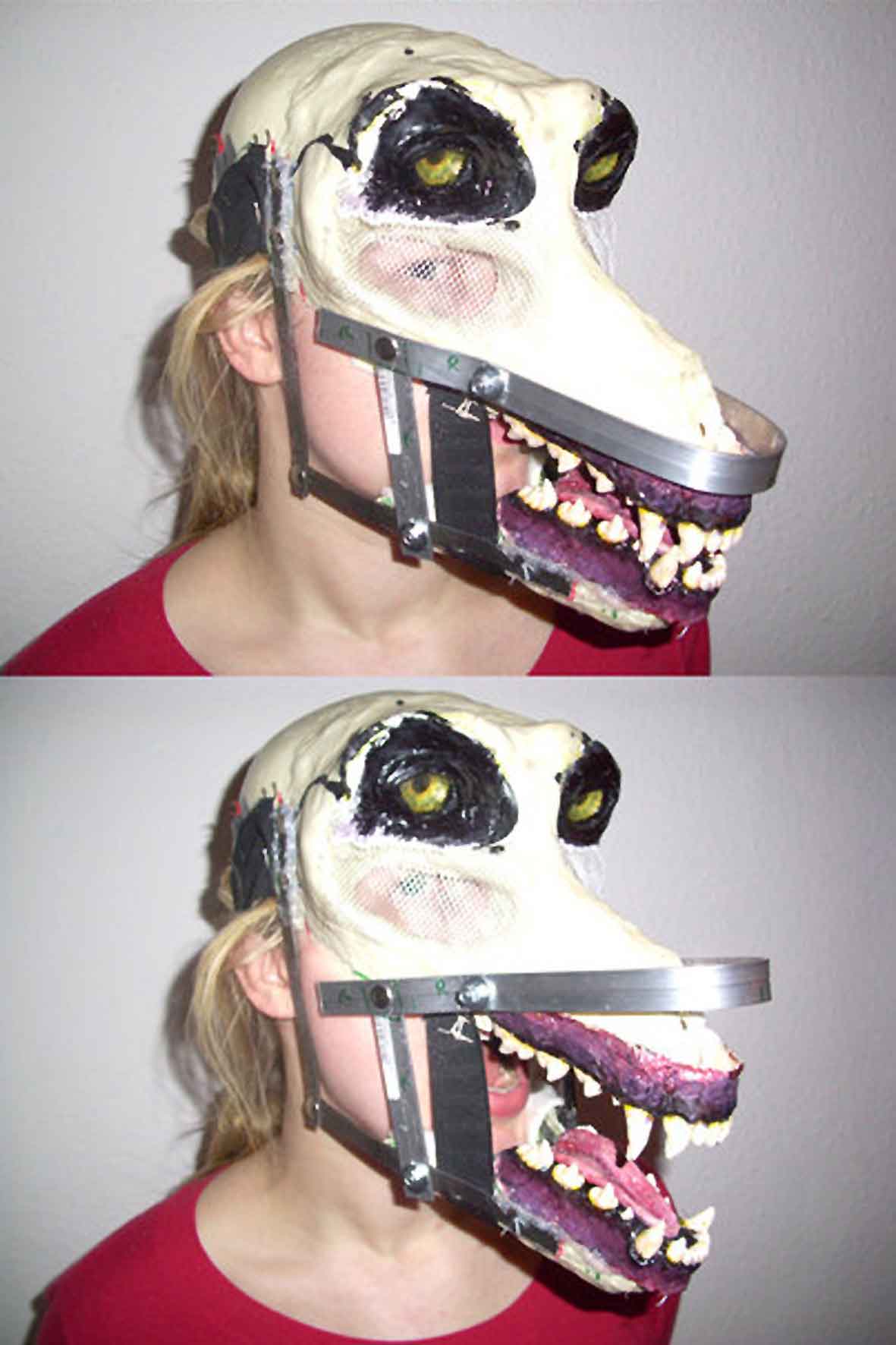 |
|||
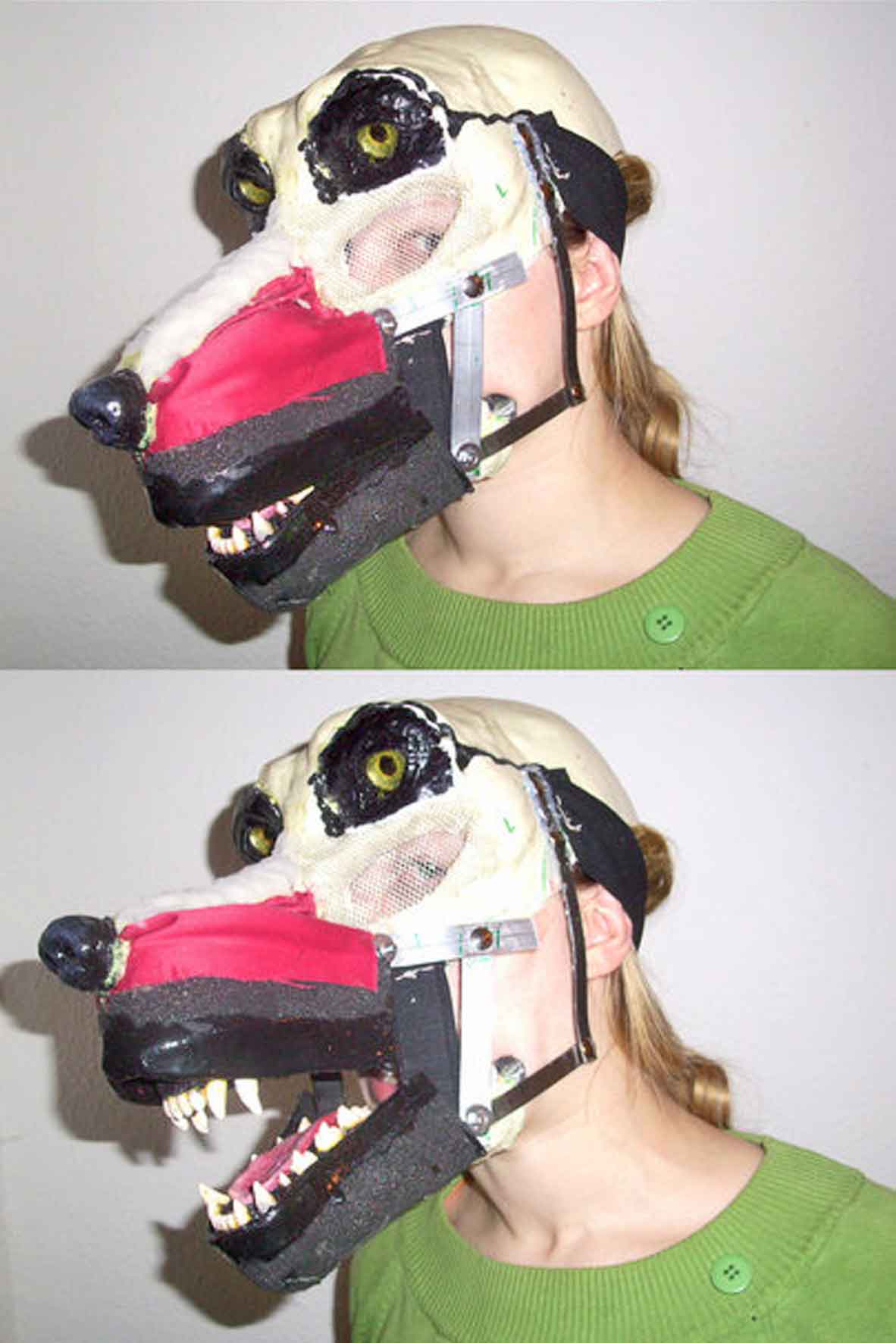 |
|||
|
Above: Jaws Nose |
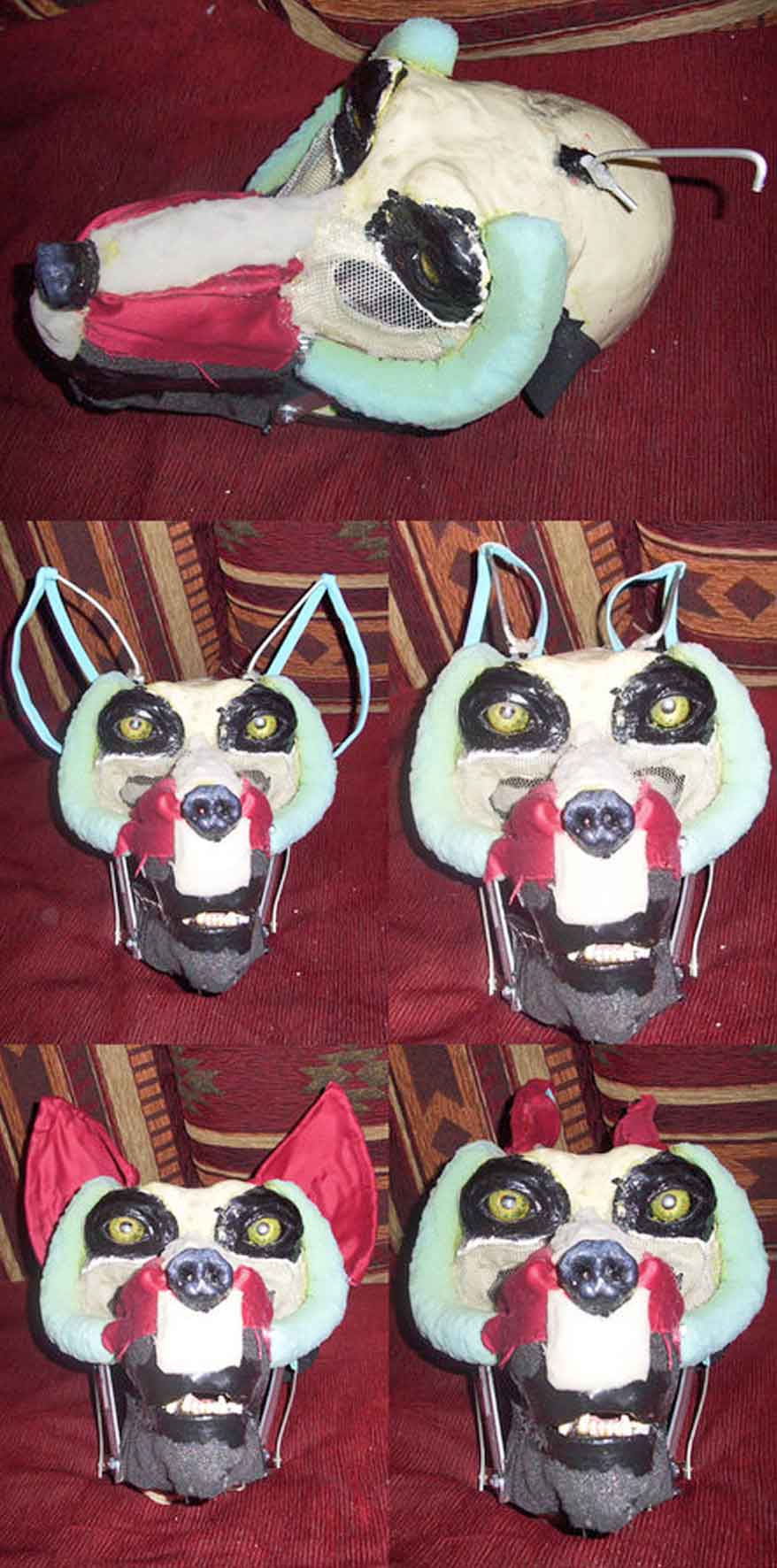 |
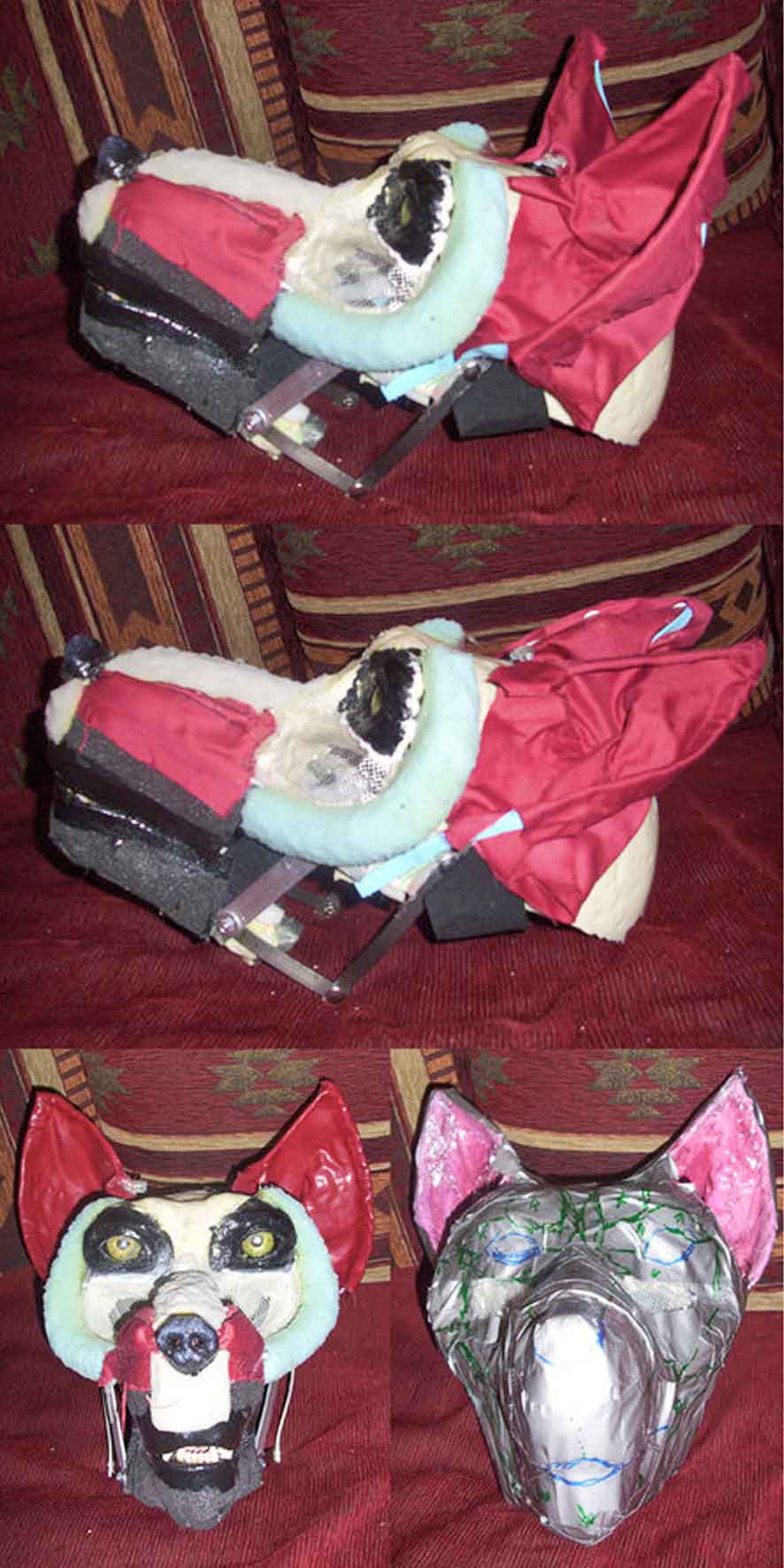 |
|
Above: Ears On the last picture the mask is wrapped up in tape from which the paper patterns for the application of fur will be made. Further changes are the sidesī foam reinforcements and more modelling clay arond the eyes to create a more wolf- like look. The next step is fur. |
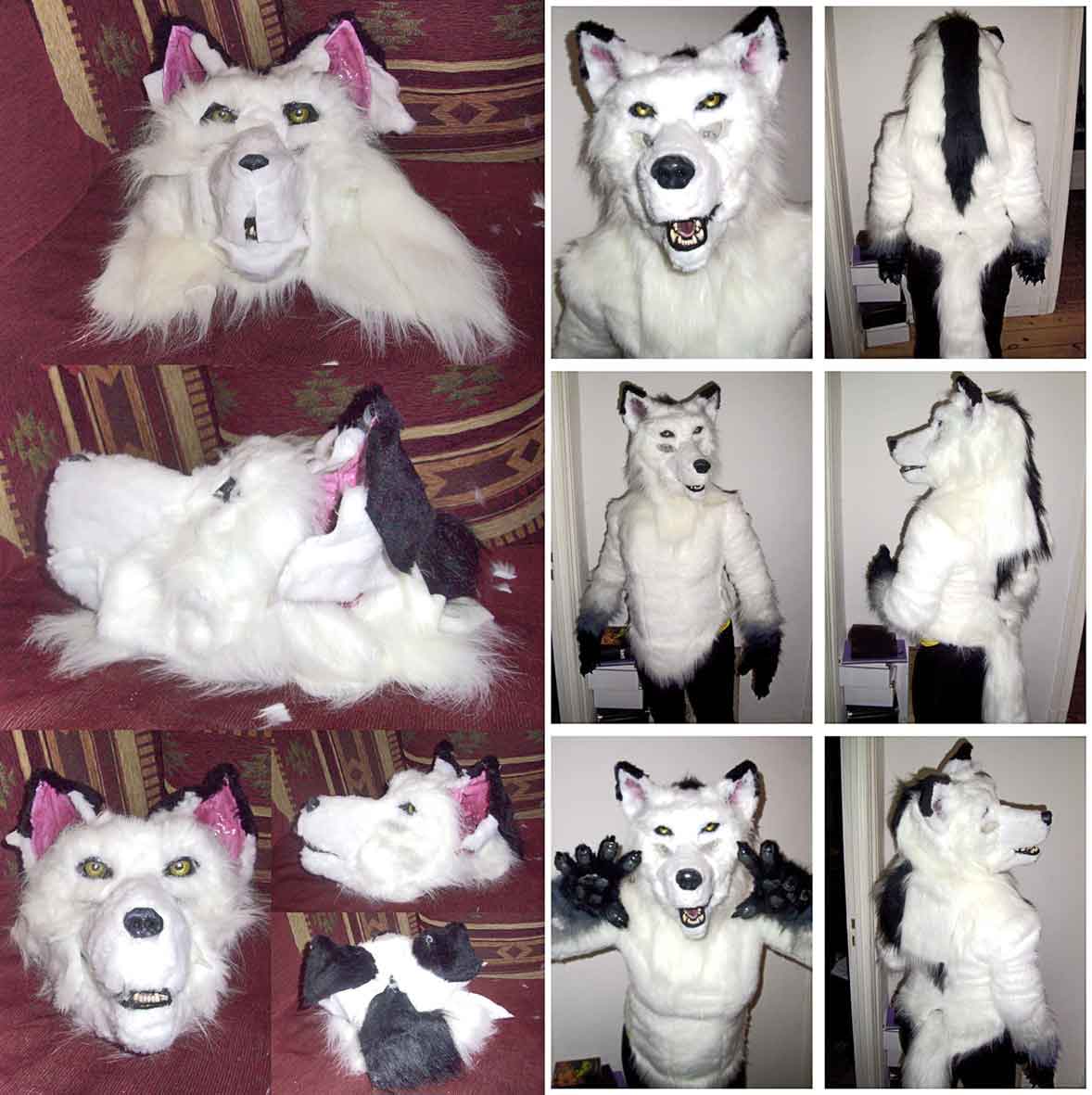 |
|||
|
Above: Fur Above, right side |
|||
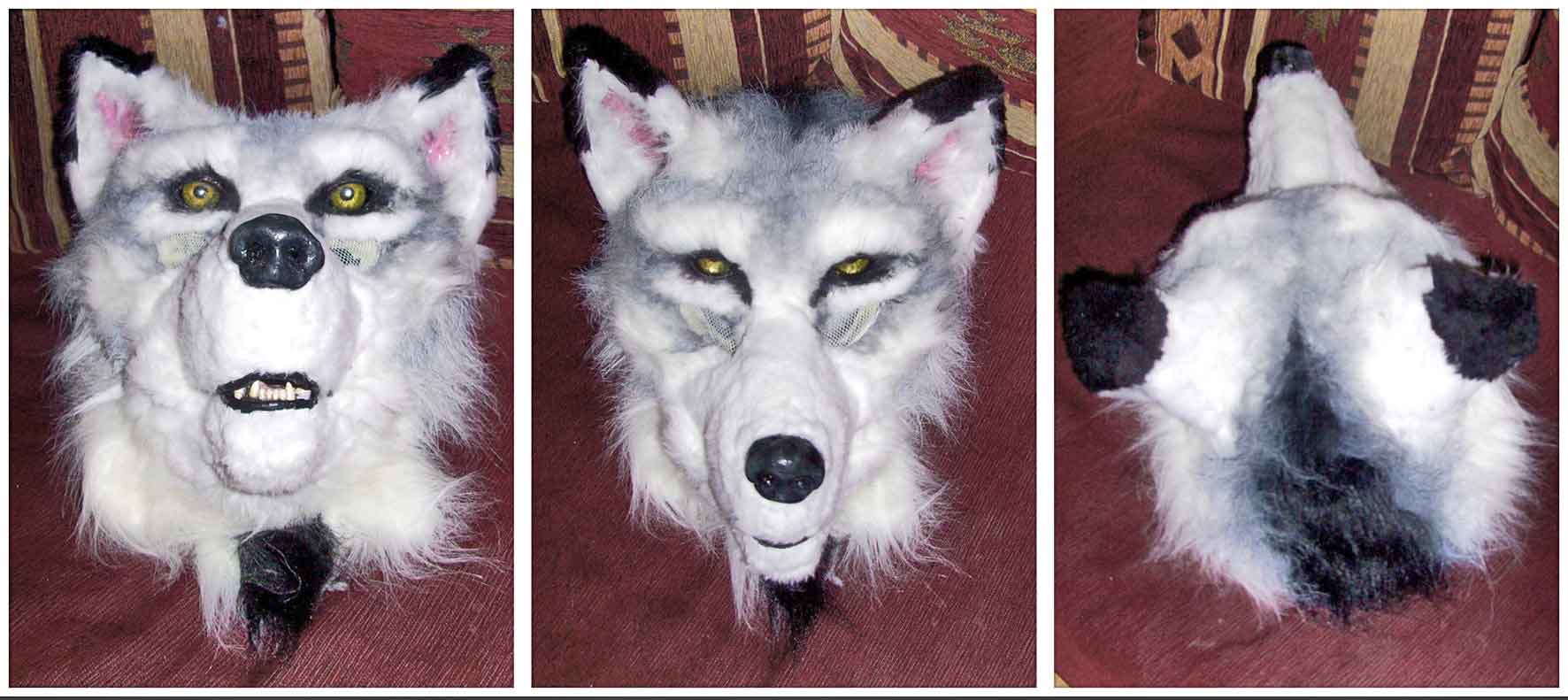 |
|||
|
Above: For my taste the head is too big in relation to the body. I also think the space between nose and mouth is too big. Unfortunately these are things I will only be able to correct in version 3.0. But I like the way the colours take shape. The mask benefits from the new contours. They also take away much of the plush look. This is the state of the project until march 2011. |
|
The body |
|
|
||||||||||||||||||||||||
|
For a good a fit as possible I sewed a covert zip on one side under the arm. This makes it possible for me to get into the costume all by myself which was important for me. The next step will be to trim the fur and then colour it. I want a light grey wolf and the thought of producing a good gradient using only brushes and paint makes me tremble a little. I donīt have access to an airbrush- set but I think if I work meticulous the other technique will do. |
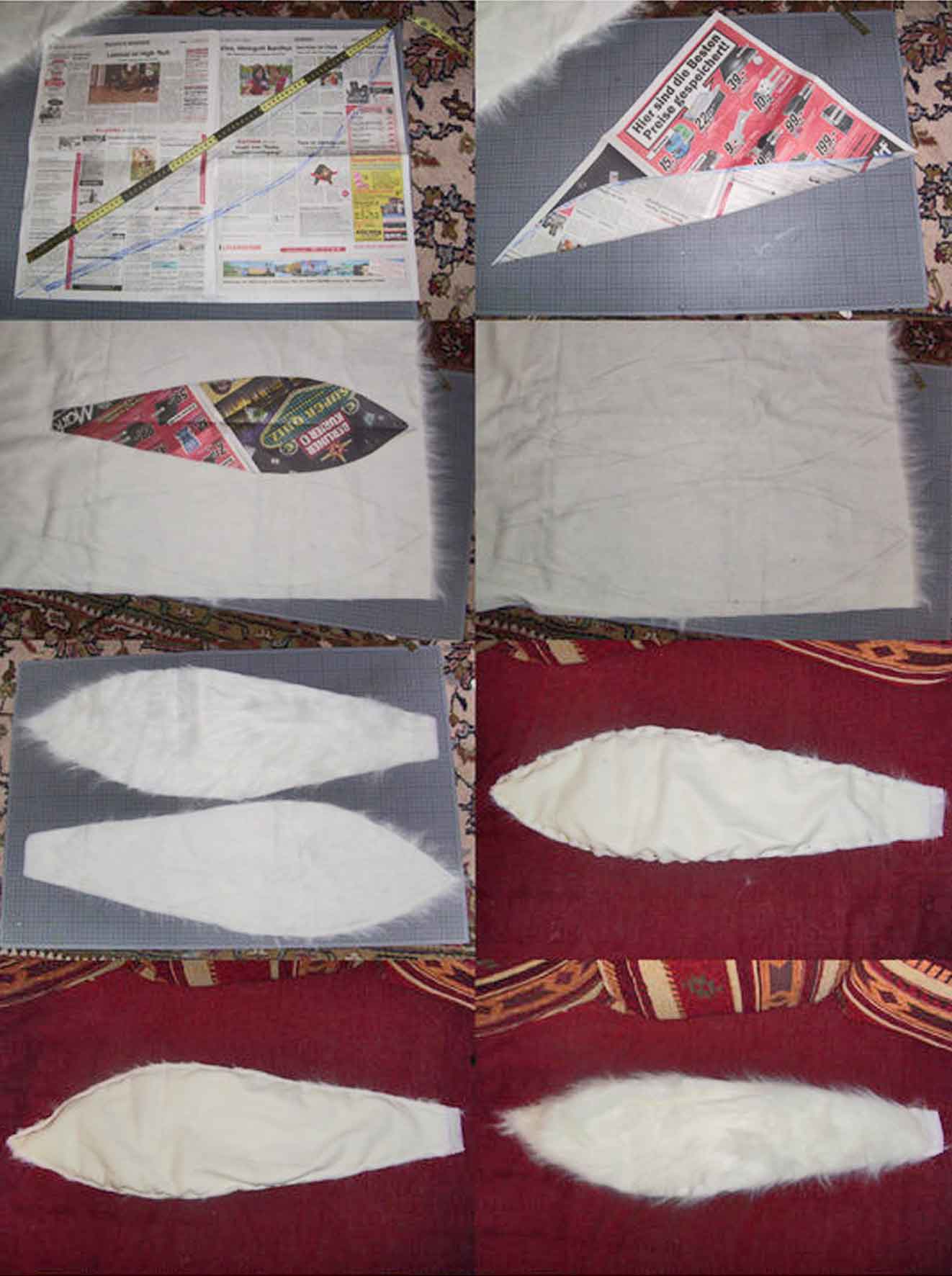 |
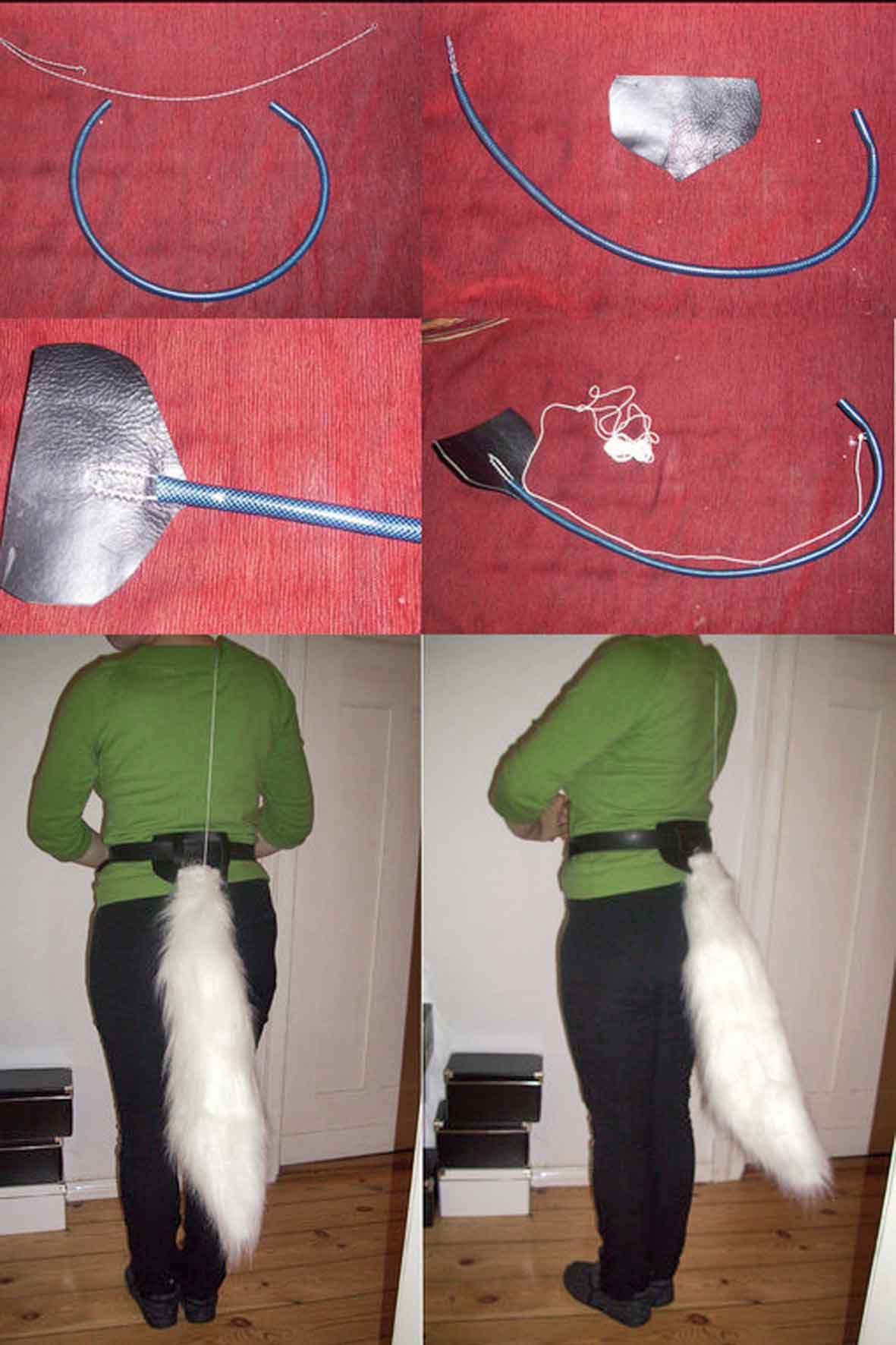 |
||||
|
Above: Tail |
|||||
|
The claws |
|
|
|
Then the fingertips and knuckles were added working from finger to finger. With the second hand Iīll first do all fingertips, then all knuckles; this seems to be the faster way to do it. The knuckles were made in a similar way with double layers of foam on top and single layers at the sides. A small piece was added towards the high part to smoothen the blending. The look that emerged is a positive surprise for me. The fingersī slightly spread position is at first a little unfamiliar but I soon got used to it. The firmness but also flexibility of the claws is sufficient enough to use them as weapons InTime but they are also suitable for picking up a pencil. The buildup of the fingertips takes away a little of the fine motor skills but I wore the claw yesterday while making cappucino or cereal and look forward to further tests when both claws are finished. |
|
|
|
Now I just have to treat them a little with silicone. The next step will be the application of fur. |
|
|
|
Surely one can use a kind of paper pattern for the fur coverings but I accepted waste of material and just glued the fur onto the back of the glove. Looked quite muppet- like... I want to wear protectors under the fur so the gauntlets mustnīt be too tight. To prevent slipping out of place they need a rubber inlay at the top. |
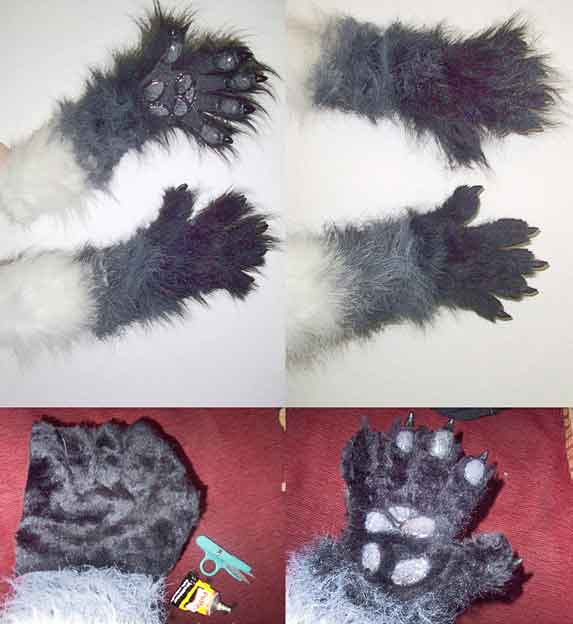 |
|||||
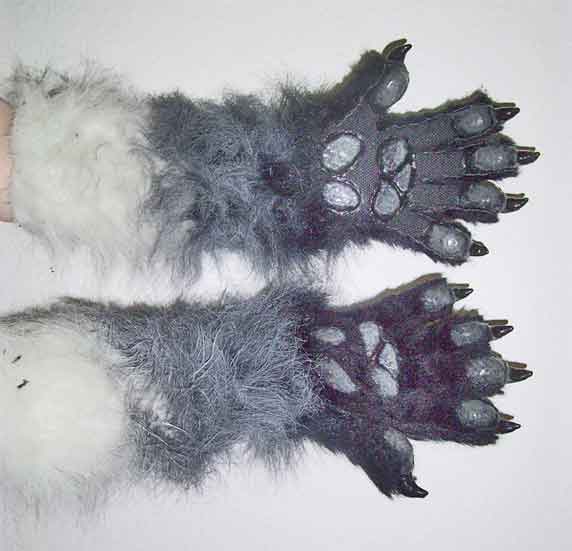 |
|||||
|
To close the gauntlet I first dressed the protectors, then fixed the fur around the arms with pins and marked the seam with a pencil. Then I sewed the fur together inside out and - after testing the fit- cut off the surplus fur. Many would stop now what I consider a mistake. I shortend the hairs between and on top of the fingers. Later I will probably also shorten the fur on the back of the hand but this can be done only with the upper body completed. At this point I again thought of stopping, but for the like of the look I decided to proceed and also put fur onto the palm of the hand. So I took short black plush- fur that is mounted on black cloth this time and glued it onto the palms around the pads. |
|||||
|
The feet |
|
|
|
They impair walking only slightly and running is also possible, but after the Role-Playing-Convention and about 3 hours photoshooting in a forest I had to reattach the toes. The fur nevertheless hold them together so I will probably keep the construction that way and only cohere the toes with a strap of leather. I am astonishingly satisfied with the feet and also like the way they blend into the suit. |
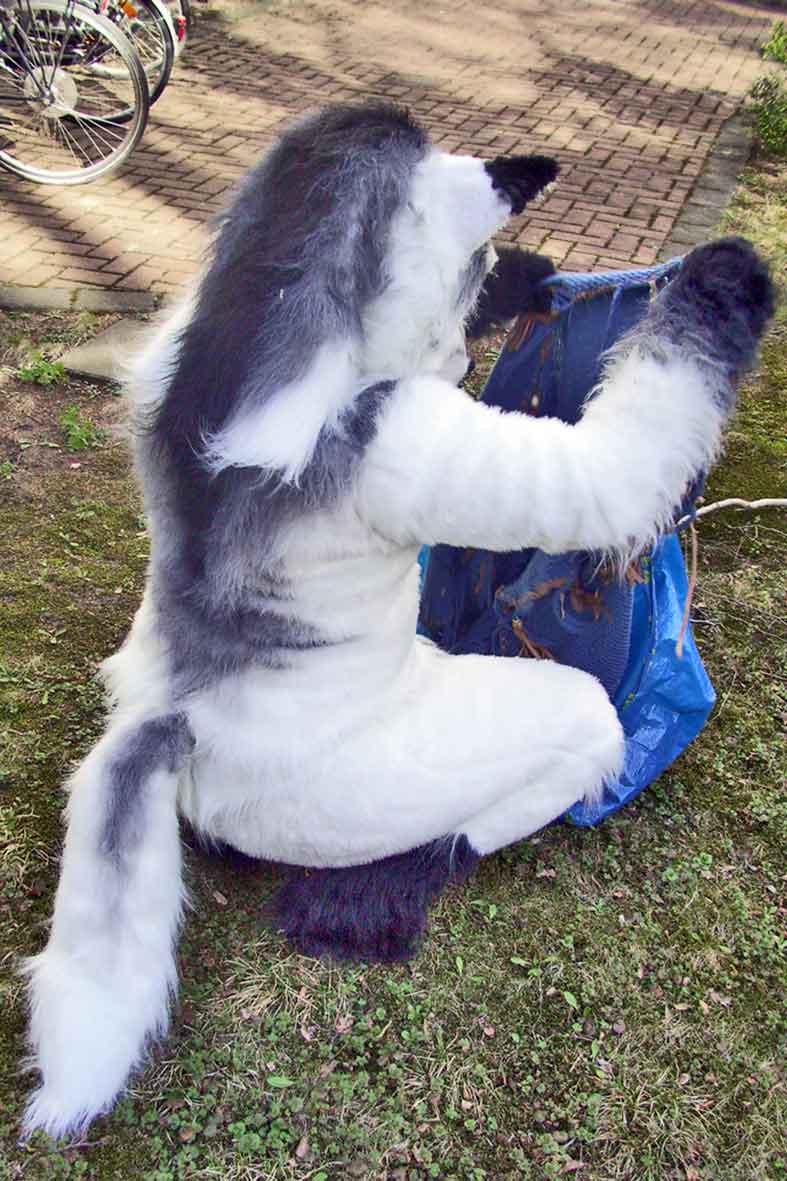 |
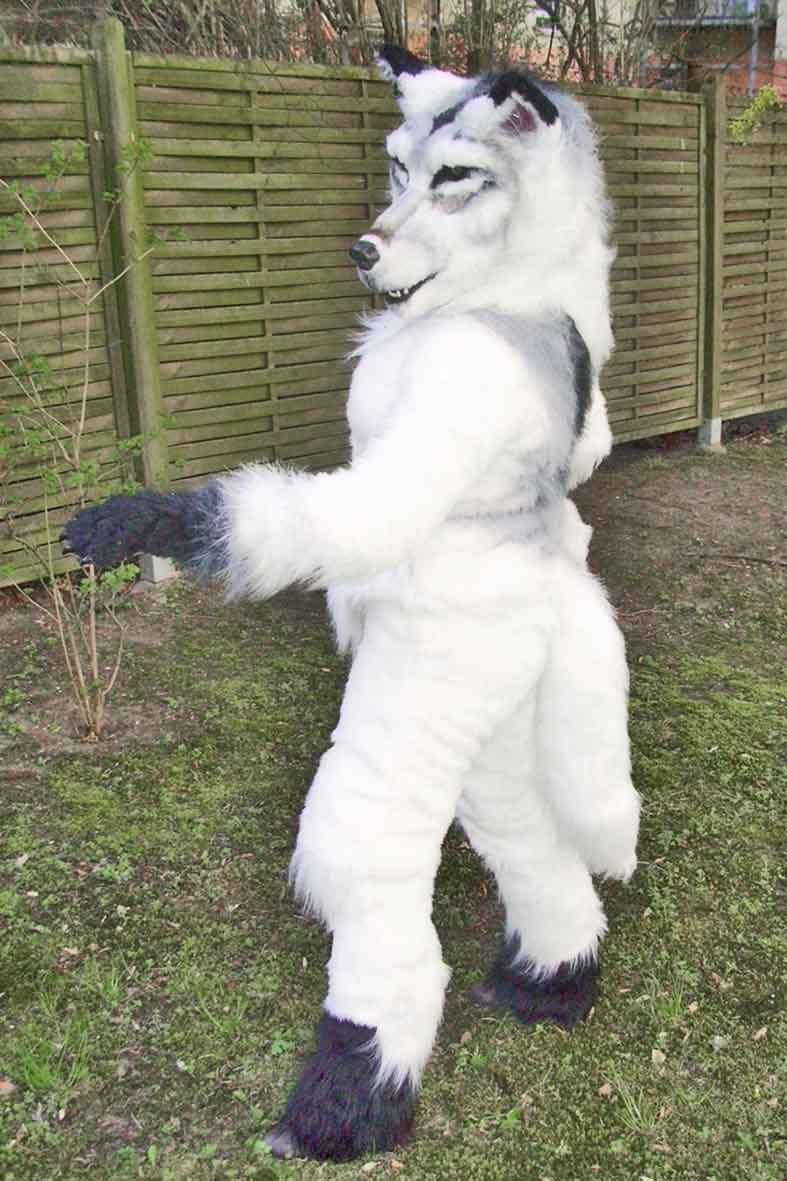 |
|
Above and below: First test |
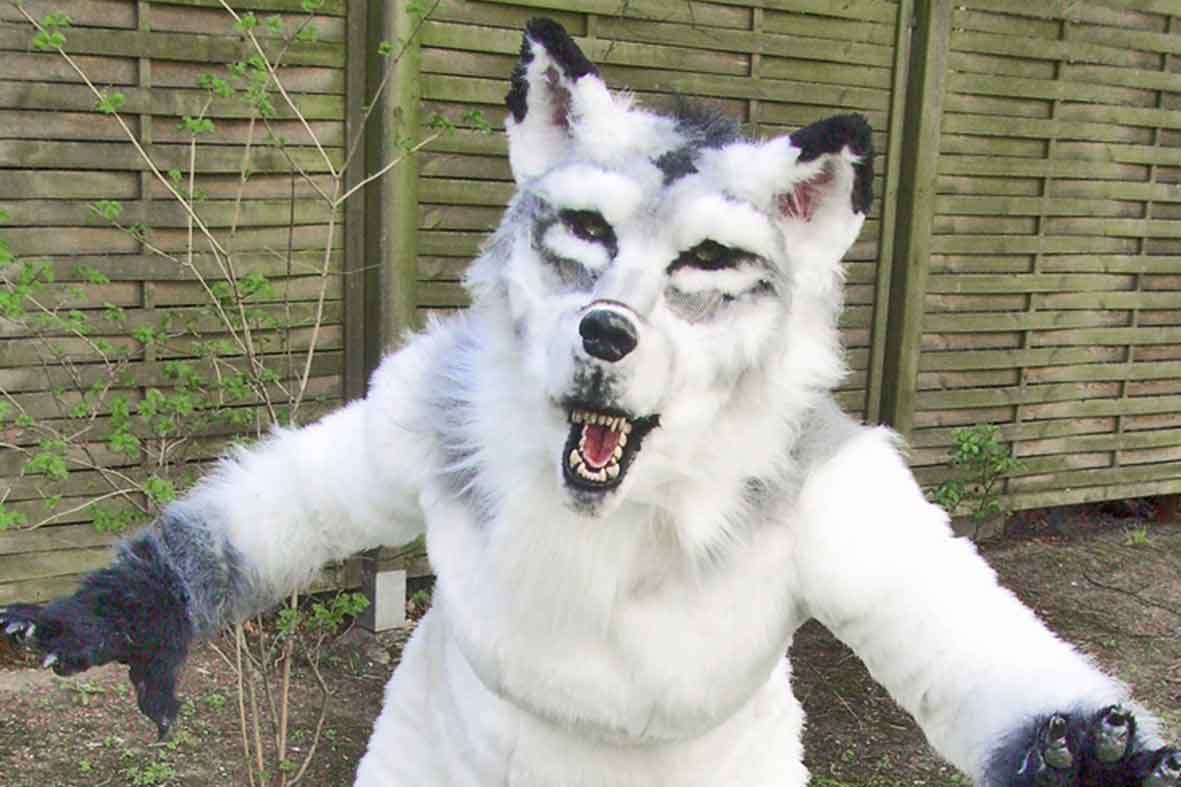 |
|
Me again: In the meantime the she-wolf has absolved several performances. For more pictures hereīs a link to one of Ralf Hülsīgalleries. Thereīll be no better pictures like these... |
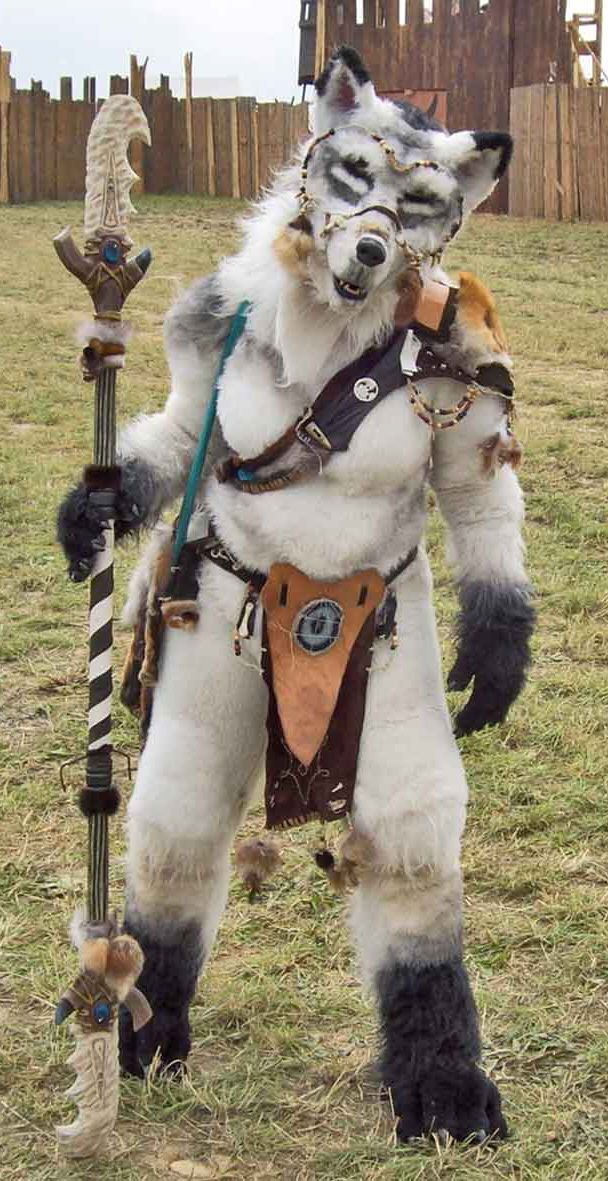 |
|||||
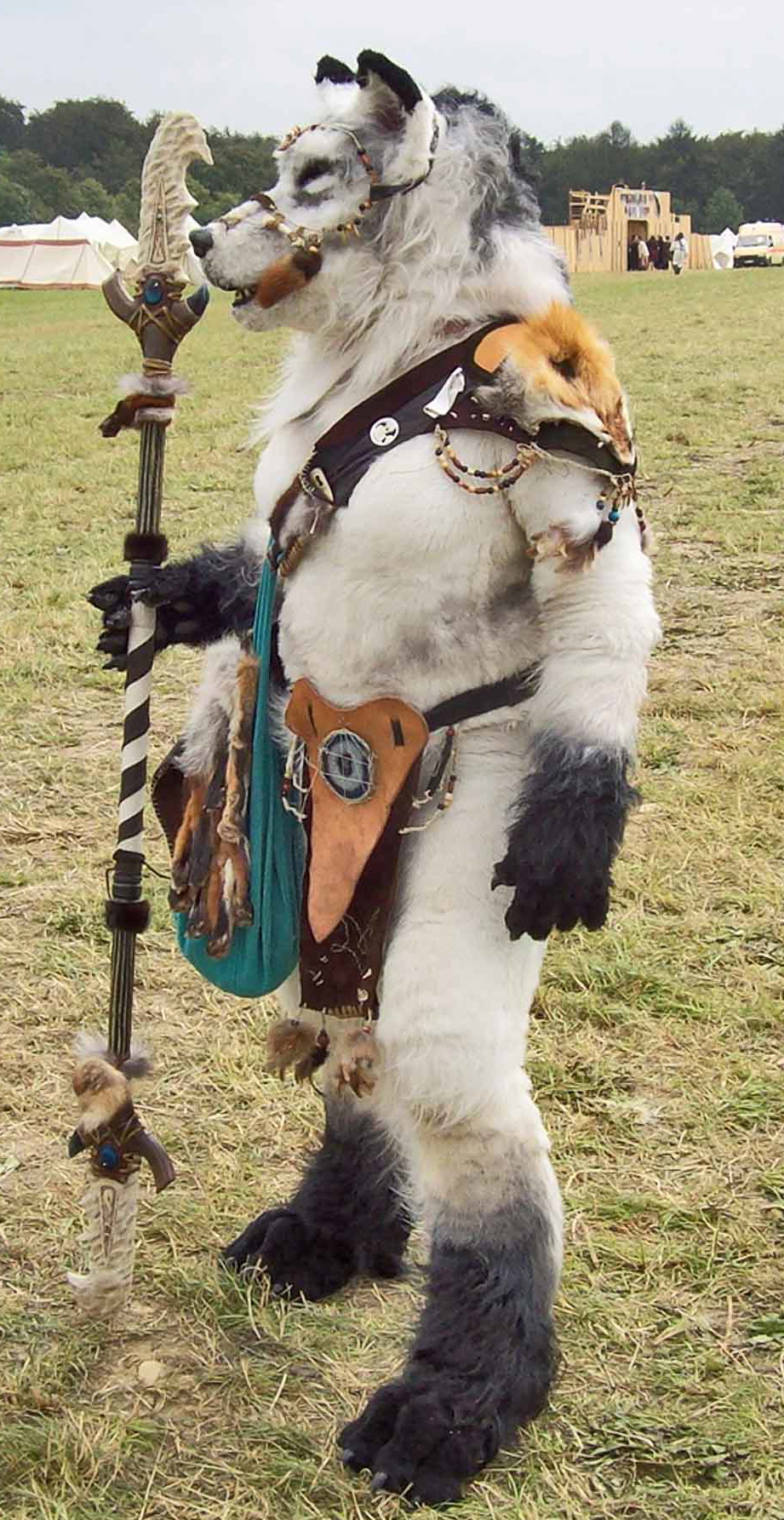 |
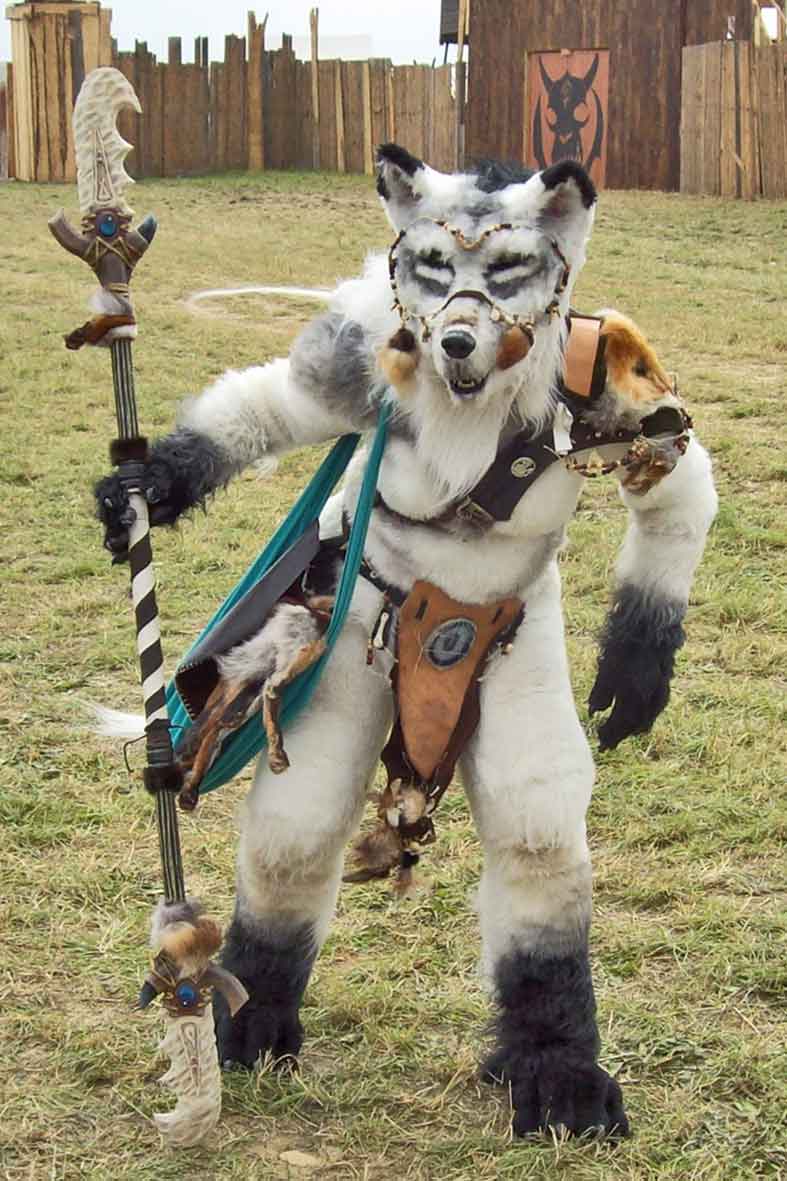 |
||||
|
Above: Drachenfest 2011 Meanwhile one can meet the wolves in the gameworlds- which doesnīt mean they are finished. As character- players (no NPCs) they and their equipment constantly evolve. And Brittaīs documentation and description of the working techniques is as comprehensive as one would wish. |
| [Home] [Deutsch] [English] [about me] [whatīs new] [Contents] [about monsters] [faqs] [other sites] |
